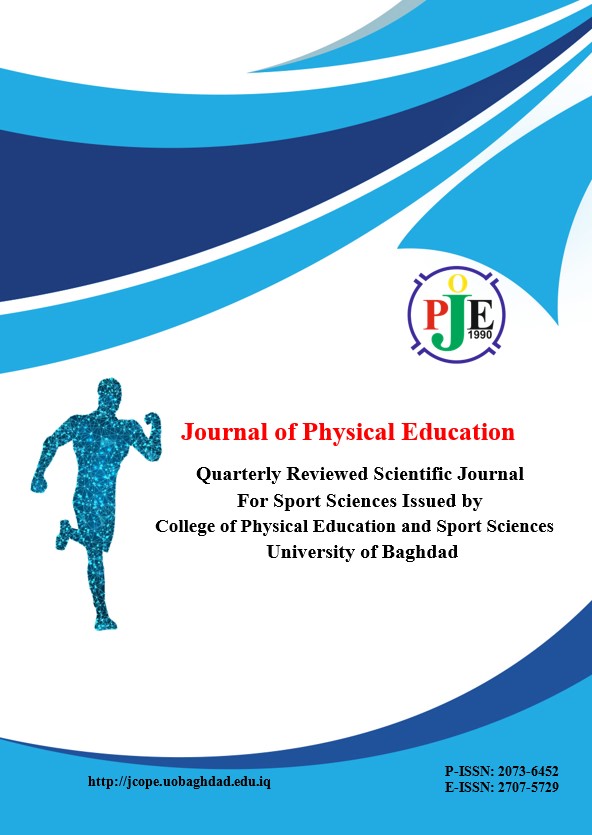The Percentage of the Contribution of Biomechanical Variables (hip angle and knee angle) and Its Relation With the Length of the First Steps of 100m Runners
DOI:
https://doi.org/10.37359/JOPE.V29(4)2017.269Abstract
This research aims at determining the percentage of contribution of all biomechanical variables (hip and knee angles) in the step length and to learn the relationship between them for 100m sprint runners. In order to achieve the objectives of the research we used the descriptive approach, and we did tests on fours sprint runners from Nassira Nounou's, Club of Athletics and for gathering information about the search variables, we used a set of tools such as a camera, a computer, and the following programs (Kinovea kinesthetic analysis version 0.8.15, year 2014 After Effect, PHOTOSHOP). we concluded that there is a relation between hip angle and the first, the second, and the fourth step's length and a relation between the knee angle and the length of the first, the second, and the fourth step. Also, the researcher has concluded that there are varying proportions for hip and knee angle at the length of the step and it has the highest percentage at the fourth step. The researchers recommend focusing on the angles of the body in the stage of starting in training and evaluation of performance because of their relationship with different stages of the race, especially in the first 20 m






 The Journal of Physical Education (JOPE) applies a Creative Commons Attribution 4.0 International license (CC BY 4.0), which lets others distribute, remix, tweak, and build upon your work, even commercially, as long as they credit you for the original creation. For more information, click the link :
The Journal of Physical Education (JOPE) applies a Creative Commons Attribution 4.0 International license (CC BY 4.0), which lets others distribute, remix, tweak, and build upon your work, even commercially, as long as they credit you for the original creation. For more information, click the link : 